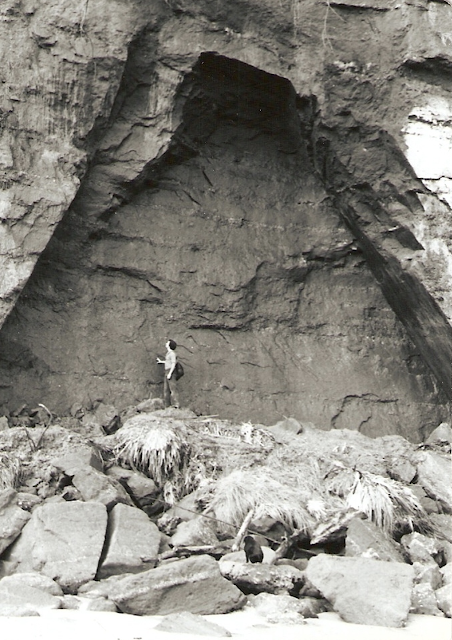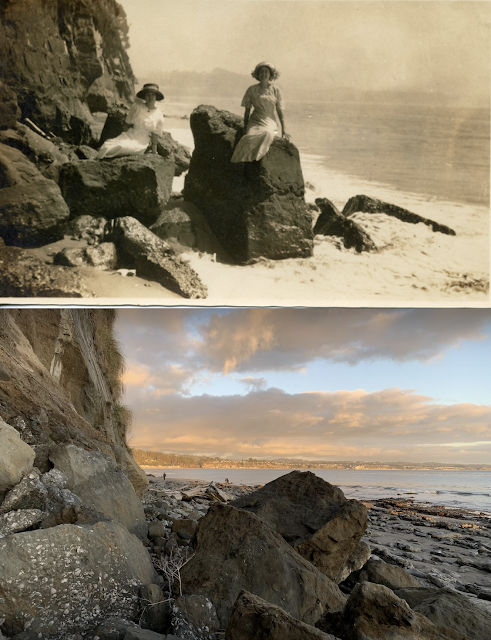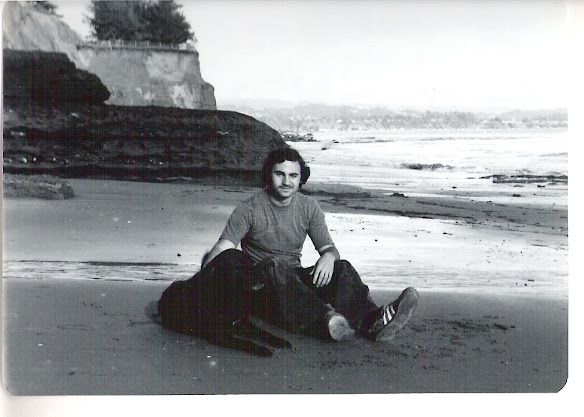The author in about 1977. My dog Blackie in the foreground.
Since 1977 when I was 17 I have been fascinated by the dynamic nature of our coast here along the Monterey Bay. I can never go down to the same shore twice; it’s in constant flux, never the same as it was the day before. One of the things that I have been tracking as a paleontologist here are the rockfalls that are continually happening as a coastal erosional process. These rockfalls are singularly amazing, not only in
grew up in the same small Canadian town together, Eastend, in the early 1900’s. In reading the words of Stegner it allowed me to feel close to the father I never knew, and at the same time allowed me to learn an appreciation for a sense of place. This is a quote from one of Wallace’s last essays, the year before he died at age 84; from “The
Sense of Place” by Wallace Stegner. Copyright 1992 by Wallace Stegner. Reprinted by permission of Random House, Inc. “So I must believe that, at least to human perception, a place is not a place until people have been born in it, have grown up in it, lived in it, known it, died in it – have both experienced and shaped it, as individuals, families, neighborhoods, and communities, over more than one generation. Some are born in their place, some find it, some realize after long searching that the place they left is the one they have been searching for. But whatever their relation to it, it is made a place only by slow accrual, like a coral reef.” I hope you all have a strong sense of place, wherever that may be, however diversified, however tangible or conceptual. In this particular place on Earth I am comforted, because it recalls the work of Wallace Stegner, who in turn certainly knew my father, and by such circuitous routes I, too, can know my father.
#Paleontologist, #paleontology, #pacificpaleontology, @pacificpaleontology, #beachfossils, #SantaCruz, #santacruzcounty, #fossil, #fossilhunting, #fieldwork, #beachcombing, #santacruzmuseum, #MontereyBay, #SCMNH, #mitigationpaleontology, #universityofcaliforniamuseumofpaleontology, #UCMP, #californiaacademyofscience, #academyofscience, #ucmpberkeley, #LACMIP, #NHMLA,
#sierraclub, #Monterey, #fosssilprep, #paleo, #montereycounty, #Purisima, #PurisimaFormation, #fossil, #gastropod, #Constructionsite, #fossilhunting, #collectingtechniques, #Bivalve, #Research, #Pliocene, #foundartifacts, #fossilpreservation, #invertpaleo, #vertpaleo, #taphonomy, #fossilcollections, #museumcuration, #collectionsmanagement, #fossilcollection, #fossilcollector, #fossilconservation, #digitization, #onlinecollections, #Rockfalls, #Coastalerosion, #Dynamiccoast, #Landslide, #Stratigraphy, #GeologicalProcesses, #Geology, #FossilFriday












